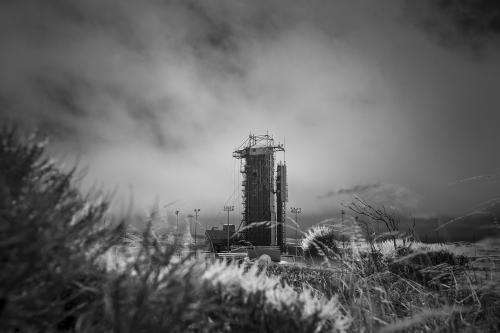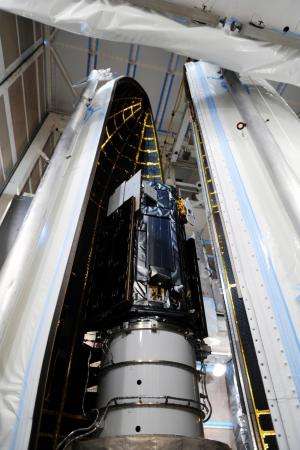Five things about OCO-2

The Orbiting Carbon Observatory-2 (OCO-2) is scheduled to launch July 1 from California's Vandenberg Air Force Base.
OCO-2 is NASA's first mission dedicated to studying atmospheric carbon dioxide, the leading human-produced greenhouse gas driving changes in Earth's climate.
- Humans release nearly 40 billion tons of carbon dioxide into the atmosphere annually. The amount varies from nation to nation, but that averages about 5.5 tons per person. Earth's land surface and ocean absorb about half of these emissions. OCO-2's measurements will show scientists where this carbon dioxide comes from (the sources on Earth) and where it is absorbed out of the atmosphere and stored (the sinks).
- OCO-2's field of view is only about one square mile (three square kilometers)—smaller than New York City's Central Park. Why so small? To dodge clouds. Clouds regularly cover about two-thirds of Earth, but even a tiny wisp of cloud in OCO-2's view compromises the measurement.
- OCO-2 studies carbon dioxide by looking at the colors (or wavelengths) of sunlight that carbon dioxide absorbs. To identify very small changes in this absorption from one wavelength to the next, the OCO-2 instrument separates light into many narrow bands of wavelengths. In three wavelength regions, which represent only a small portion of the spectrum, it can measure more than 3,000 individual bands. A camera divides the same range of wavelengths into just three colors.
- OCO-2 will collect 24 measurements every second, totaling about a million soundings every day. Of these, about 100,000 are expected to be sufficiently cloud free to provide highly useable carbon dioxide data. The best carbon dioxide-observing satellite currently in orbit takes 4 seconds to make one sounding and collects fewer than 20,000 pieces of data per day, with about 500 of those being highly useful.
- The observatory has just a 30-second opportunity to launch. The timing has to be so precise because OCO-2 will join the A-Train, a constellation of five other international Earth observing satellites that fly very close together to make nearly simultaneous measurements of our planet. Launching a few seconds too early or late will prevent it from joining the right orbit track. If it misses its 30-second opportunity on July 1, it can launch during a similar 30-second window on a succeeding night.

More information: www.nasa.gov/oco-2
Provided by NASA





















